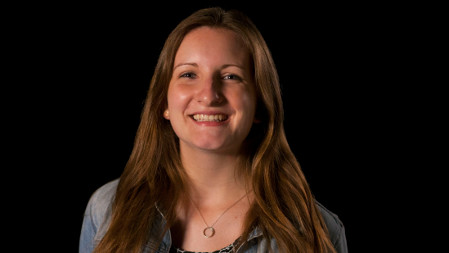SMPTE 2017: Q&A—Anna Dining, Technicolor
Shortly before the start of the SMPTE 2017 Technical Conference & Exhibition, TV Technology spoke with Anna Dining, a support engineer for On Location Services at Technicolor, about her Tuesday presentation “Story Presence & Perspective: A User Study of Story Presence in an Immersive Narrative Experience.”
TV TECHNOLOGY: Of the various variables—frame rate, color gamut, dynamic range visual immersion—do some succeed more in active experiences better and others in passive ones? How does that break down?

ANNA DINING: I can only really speak about the success of active and passive experiences in regard to the variable of visual immersion, as that is what I have tested and researched. Overall, for all the variables, it really depends on the story. In order for a story to be told successfully, the director must carefully select what variable formats they are going to use to tell their story. A rule I have for myself is: Don't use a new format if you can't define a way that it will enhance your story compared to if it were told with more traditional cinematic formats. I personally consider active and passive as divisions of existence in a visually immersive story where active existence can relate to actively perceiving the narrative from the perspective of a character in the story and passive existence is when the participant is simply a fly on the wall. Visually immersive stories are most successful when the participant has an enhanced sense of presence as a result of experiencing the story from a perspective inside the scene. Through my user study comparing experiences with active existence and passive existence, the results indicated that participants felt more present in experiences with active existence than with passive existence. So for visual immersion, the active experience was more successful.
TVT: Of the various variables—frame rate, color gamut, dynamic range visual immersion—would it be fair to say that the immersion aspect is the one that presents the most potential negative reaction, such as the sick feeling some people get from VR?
DINING: No, not necessarily. If, by negative reaction, you mean an objective physical reaction, yes, as I do not think variant frame rates, color gamuts or high dynamic range have any real possibility of causing a negative physical reaction. Yet, if negative reaction refers also to a person’s subjective opinion to the variable, then I think they all have equal possibility of causing a subjective negative reaction. Members of the industry and the audience of motion pictures are used to the traditional cinematic format. When any variable is altered from the traditional, there will always be skeptics, enthusiasts and a large population of indifference.
TVT: If you had to identify the one technical weak link in realizing the promise of immersive narrative experiences, what would it be?
DINING: There are numerous weak links in regard to the tools and technology currently available to create and share immersive experiences, for example display resolution in HMDs. Yet technology is constantly evolving and I do not think it is useful to dwell on its current state in regard to the promise of the format. I am confident that in some number of years, technology will get caught up to where our critical minds will be satisfied, and our creative imaginations will have fewer limitations. For now, I think the weakest link is the lack of intentional-creation and maximization of the emerging format.
Too often directors, production companies, and ad agencies are approaching this new format with little research and false expectations that it is a simple step from traditional cinematic storytelling, yet it is more like a journey to a whole new planet. Just as you can't show up to Mars and expect to breathe and walk the same as you do on Earth, you can't expect your mastery cinematic storytelling within a frame to translate to a frameless format. It takes time to understand a new format, and that is why it is important to determine what makes a good immersive narrative with the current state of technology, so that storytelling can evolve alongside technology. If there is not quality content, then I fear that the audience of consumers and developers interested in immersive narrative experiences will decrease or cease to exist, weakening the promise of immersive narrative experiences.
TVT: Do you see the tools of traditional cinema language—composition, editorial, etc.—being replaced by immersive narrative experiences? Or do you see the two different approaches to creating story presence co-existing into the foreseeable future?
DINING: Most definitely coexisting. I always like to stress that immersion is not a replacement to traditional methods of motion picture storytelling, but rather an expansion of the possibilities of storytelling. In visually immersive experiences, there is no longer a frame, yet there is perspective. Perspective-based storytelling permits the viewer or participant to exist inside the story environment where they can achieve a sense of presence in the space and story. For immersive narrative stories, the director must rely on the participant's visual exploration to grasp understanding of their story, whereas for traditional cinema, the director has more control to frame the story through composition and editorial. Different stories with variant directorial intent will benefit from visual immersion, yet others may need the story to be shown and told more directly. Thus traditional cinema and immersive narratives will continue to coexist as some stories need to be told, others need to be experienced.
Get the TV Tech Newsletter
The professional video industry's #1 source for news, trends and product and tech information. Sign up below.
